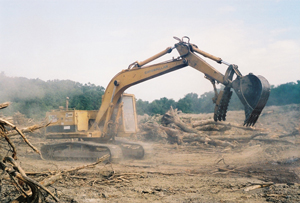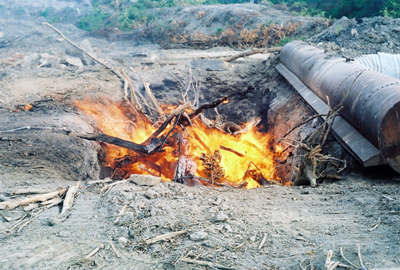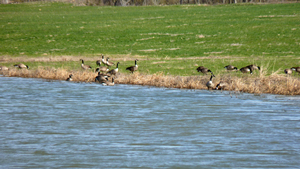Oklahoma AML Program Wins Reclamation Award from Office of Surface Mining

The Oklahoma Conservation Commission’s Abandoned Mine Land Reclamation Program (AML) is one of five state agencies in the nation to win an Abandoned Mine Land Reclamation Award from the U.S. Office of Surface Mining. The awards will be presented at the National Association of Abandoned Mine Land Programs’ annual conference. This year’s NAAMLP conference will be held in Scranton, P.A., Sept. 19-22, 2010, with the awards banquet on Sept. 20.

The Office of Surface Mining (OSM), an agency within the U.S. Department of Interior, presents the Abandoned Mine Reclamation Awards to recognize outstanding abandoned mine land reclamation in the United States and showcase exemplary reclamation techniques. Only projects funded wholly or in part and completed by approved state or tribal regulatory programs are eligible to win. Past award winners have encompassed all types of reclamation, including coal, non-coal, and emergency projects. A panel of judges comprised of directors of state reclamation programs and certain OSM managers vote to determine the winners.
The Oklahoma AML Program won the OSM award for its 6lst Street North SW Abandoned Mine Land Reclamation Project in Broken Arrow. The abandoned strip pit coal mine with a highwall and spoil piles is located just one mile east of Broken Arrow High School in one of the fastest-growing areas of the state. Large boulders placed strategically north of 61st Street failed to deter the temptation to use the area for unauthorized recreation including all-terrain vehicles and gun target practice. With the paving of 61st Street and the completion of several new houses, traffic in the area increased and so did the number of unauthorized “fun seekers.”

The 61st Street North SW AML Project was one phase of the original 61st Street North AML site, which totaled 155 acres. As a Minimum Program State with limited AML funding, the site was phased by using Adams Creek to divide it into two phases. This site was one of Oklahoma’s high priorities, but with minimal funding, it had not been reclaimed.
When the Oklahoma Conservation Commission’s AML staff received a call from one of the new homeowners across from the site, the situation changed. The landowner reported that he had heard shots fired across 61st Street from the AML site. He became very concerned when he discovered a 22-caliber slug lodged in the door frame of his front porch. With a 20-foot dangerous highwall extending approximately 1,950 feet along the west side of the project site, accompanied by a 20-foot deep hazardous water body, spoil piles, and now a “non-permitted firing range,” it was time to move the 61st Street North SW AML site to the top of the AML selection list.
Work began at the site in May 2008. The contractor used an air curtain burner to burn small timber and brush at the site. The air curtain burner creates a high-pressure wall of air blowing directly into the top of the burn pit to force smoke back into the flame where it is consumed. The result is a greatly reduced impact to air quality from smoke in the area. Large timber was separated and transported to Henryetta and used to construct wooden pallets.
Final inspection was held in June 2009. A change order added 47 additional days for a total of 374 calendar days. Fifty acres were reclaimed and approximately 2,000 feet of dangerous highwall and one hazardous highwall were eliminated. The contractor was successful in returning the site to its original contours. Not only were the 5.96 acres of original wetlands maintained, but 4.28 acres of new wetlands were added. Nearby Adams Creek was protected with the creation of buffer zone along its south bank and final grading of the site-directed water runoff away from the creek. Students from Oklahoma State University helped plant vegetation in wetland areas. Members of the Oklahoma State University Student Chapter of the Society of American Foresters planted 2,000 bare-root trees at the site. The city of Broken Arrow was pleased that the reclamation work provided an overall increase in floodplain storage.
“There are $100 million worth of these abandoned mine land projects in the state, posing hazards to public safety,” said Mike Kastl, OCC’s AML Program director. “With our current federal funding of $2.4 million a year, we can only address the projects that pose the very greatest and most immediate threat to public safety. Obviously, with more funding we could address a lot more of these potentially dangerous abandoned mine projects,” Kastl said.
